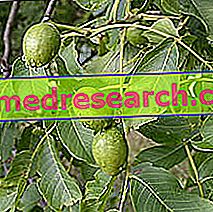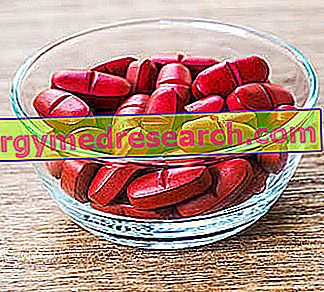
Scientific name
Juglans regia
Family
Juglandaceae
Origin
Europe
Synonyms
Walnut tree
Used Parts
Drug consisting of the leaves of the tree but above all of the husk (outer shell)
Chemical constituents
The main chemical constituents of walnut leaves are:
- Essential oil;
- naphthoquinones;
- juglone;
- lawsone;
- Flavonoids;
- Tannins;
- Minerals;
- C vitamin;
- Carotenes.
Instead, the main chemical constituents of the walnut husk are:
- Tannins;
- juglone;
- Vitamins A, B and C.
Walnut in herbal medicine: properties of walnut
The walnut tree husk has always been known for its antiseptic, anti-inflammatory, astringent and purifying properties, but its use is not recommended for internal use; the greatest use of the husk occurs in the liqueur industry for the production of the famous Nocino and in cosmetics: juglone is present in various self-tanning formulations but also in dyes for skin and hair.
The extracts derived from dried walnut leaves are used for anti-inflammatory purposes for external use (in relation to the tannins contained in them) and as wormers.
Biological activity
The walnut has astringent and antifungal properties. More precisely, the astringent activity is due to the tannin content, while the anti-fungal properties are given to the plant by the juglone and the essential oil present in it.
As mentioned, the juglone is part of the composition of coloring products for skin and hair, but the potential anticancer properties of this molecule have also been investigated. In fact, in this regard, several studies have been conducted and it has emerged that juglone is able to exert a cytotoxic, antiproliferative and anti-invasive action against malignant cells belonging to different types of tumors, such as pancreatic cancer, brain cancer, lung cancer and breast cancer.
On the other hand, some authors argue that the topical use of preparations containing walnut husks - hence the juglone - could have a mutagenic and potentially carcinogenic effect on the skin.
In light of this, before being able to approve any kind of therapeutic application of the juglone, it is necessary to conduct further and more in-depth studies, in order to thoroughly investigate both the properties and the actual safety of use.
Walnut against skin inflammation and against excessive sweating
Thanks to the astringent and slightly anti-inflammatory action performed by the tannins contained in the walnut, the external use of this plant has been officially approved for the treatment of skin inflammation and excessive sweating.
For the treatment of the aforementioned disorders, a walnut decoction can be used for external use. Generally, it is recommended to prepare this product using about 3-6 grams of drug.
Walnut in folk medicine and homeopathy
In folk medicine, walnut leaves and husk are used internally as a remedy to counteract the excessive production of intestinal mucus and as a remedy to purify the blood.
In Chinese medicine, walnut is used for the treatment of disorders such as asthma, constipation, low back pain and even as a remedy to combat berate and impotence.
In Indian medicine, however, the plant is used for the treatment of rheumatism. Walnut seed oil is used as a remedy against tapeworm infestations; while the seeds are used in case of dysentery and colic. Moreover, traditional Indian medicine attributes aphrodisiac properties to walnut seeds.
Walnut is also used in homeopathic medicine, where it can easily be found in the form of granules, oral drops and glycerine macerate. In this context, the plant is used in case of gastric disorders, diarrhea, hepatobiliary disorders, pancreatitis, proctitis, hemorrhoids and in case of skin eruptions, skin itching, acne and eczema.
The dose of homeopathic remedy to be taken can vary from one individual to another, also depending on the type of disorder that needs to be treated and the type of homeopathic preparation and dilution that you want to use.
Contraindications
Avoid taking walnut in the event of hypersensitivity to one or more components.
Pharmacological Interactions
- interactions with oral antidiabetics.



